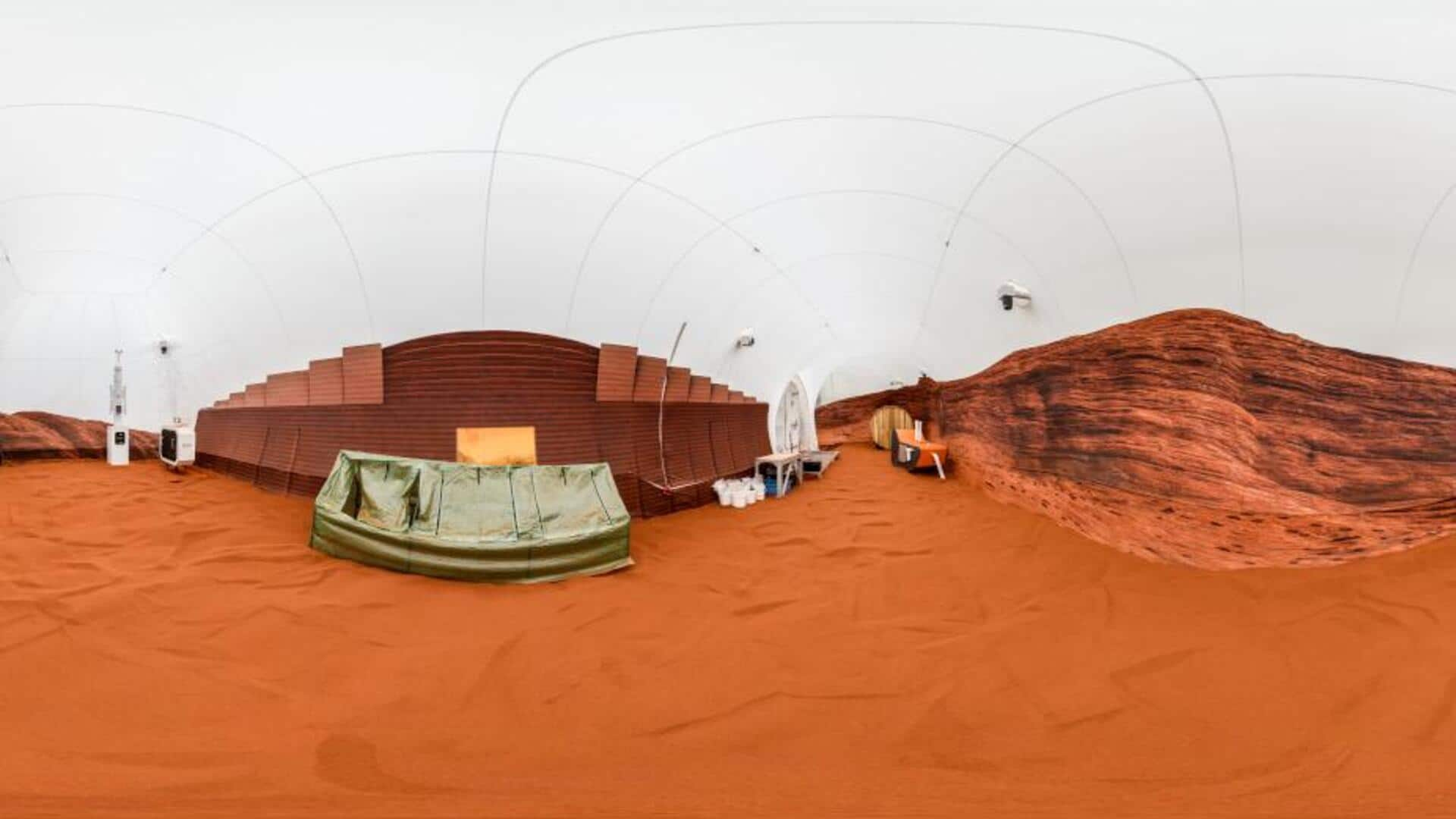
NASA's analog astronauts begin 1-year-long simulated 'Mars' mission
What's the story
For the next year, four people will live in a Mars-like environment. They have started spending their time in a habitat that is similar to the conditions found on Mars.
The habitat is located at NASA's Johnson Space Center, Houston.
The crew will be performing activities akin to what astronauts would perform on the Red Planet and scientists will monitor from outside.
Context
Why does this story matter?
Sending astronauts to Mars may not sound as far-fetched anymore.
Crewed missions to the Red Planet have been one of NASA's long-standing goals and that goal is gradually getting closer to becoming a reality.
The Mars analog missions will be crucial in providing insights into the issues astronauts may face, technical difficulties, and importantly, the impact that the environment would have on their health.
Mission
Meet the crew members of the mission
The current Mars-analog mission, called Mission 1, has already commenced. It started on June 25 and will end on July 7, 2024.
The four crew members part of the mission are Kelly Haston (the mission's commander), Ross Brockwell, Nathan Jones, and Anca Selariu.
Brockwell is the flight engineer while Jones is the medical officer. Selariu is the mission's science officer.
Habitat
Where are the astronauts now?
Currently, the four astronauts are living in a 1,700-square-foot habitat called "Mars Dune Alpha."
It has been constructed primarily via 3D printing. To demonstrate the actual feel of the Martian landscape, it is fully covered with red sand.
The crew will mostly be at Mars Dune Alpha but will occasionally step out to the adjoining 1,200-square-foot "sandbox" to perform Mars-walks or simulated spacewalks.
Activities
Mars Dune Alpha is equipped with basic amenities
Mars Dune Alpha has the basic amenities the crew would need for their tenure including a kitchen, two bathrooms, and "private crew quarters."
Along with carrying out routine activities, like exercising, sleeping, and cooking, the crew members will also be guided to perform science investigations inside the simulated Mars habitat, carry out maintenance activities, and grow fresh crops.
Timing
The crew is provided with freeze-dried food
The crew members are provided with freeze-dried food.
It would take about 22 minutes for messages from Mars Dune Alpha to reach the mission controllers—the same time it would take for communications from Mars to reach Earth.
However, Mars Dune Alpha is not simulating the gravity conditions on Mars. The Red Planet has 38% of the surface gravity found on Earth.
Timing
The crew would face real-time problems like equipment failure
Mission 1 will be running on Earth time, instead of sols—days on Mars that measure roughly 24 hours, 39 minutes, and 35 seconds.
The prime objective of this mission is to assess the impact of the Mars-like environment on the crew's health and performance.
Interestingly, the crew will encounter real-time difficulties, similar to what would exist on Mars, like resource limitations and equipment failure.
Crew
Crew members were subjected to physical examinations prior to mission
Mission 1 is the first of the three planned experiments under NASA's Crew Health and Performance Exploration Analog (CHAPEA) program. The remaining two missions will happen in 2025 and 2026.
Prior to the mission, the crew was subjected to the same physical and psychological examinations as astronauts would undergo to make sure they were fit for the year-long Mars analog mission.
Official words
CHAPEA is really about creating realistic Mars conditions
"What CHAPEA is really about is Mars-realistic conditions in terms of resource restrictions, so isolation confined with the living space being one of them," said Suzanne Bell, who heads NASA's Behavioral Health and Performance Laboratory, to space.com.
"But we're also restricting the crew to a spaceflight food system, time delayed communications, mission-relevant timelines, contingency situations and other resource restrictions."